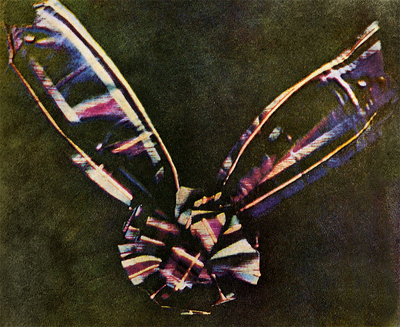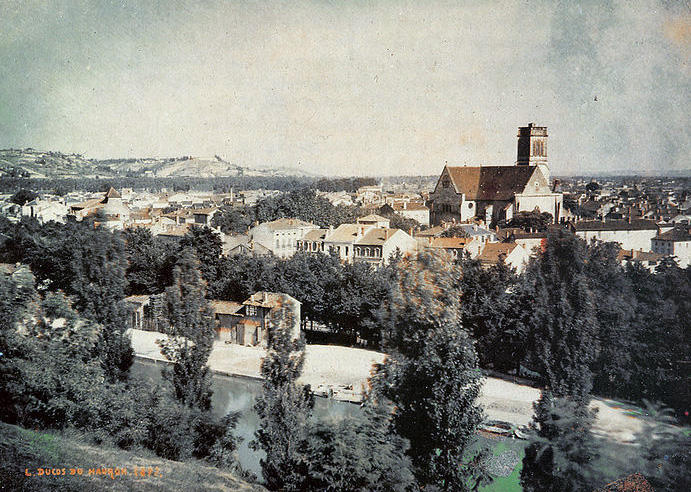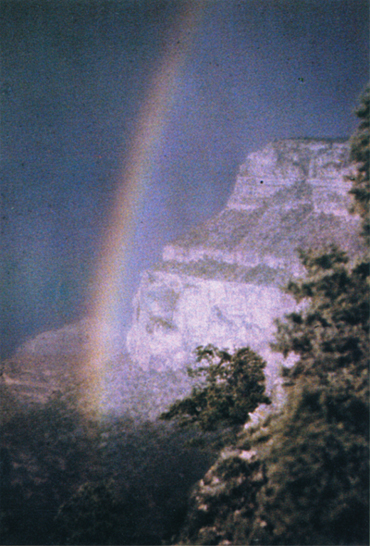
Page two

James Clerk Maxwell was among the pivotal physicists in history. He teamed with innovative photographer Thomas Sutton in 1861 to attempt recreating natural color by obtaining photographs of a colorful subject using projected images captured and projected using only red, green and blue light. This initial demonstration was hampered by the films near blindness to green and red light, but 1901 saw the development of 'Panchromatic' films capable of quality RGB color separation work. Although a comprehensive review of photographic history is beyond the scope of this page, a later champion of the early maturity of this color photography method was the Russian photographer Sergei Prokudin-Gorskii.

A complex method of superimposing dyed images made with different color filters onto a paper print was first demonstrated by Louis Arthur Ducos Du Haruron in 1868. This 1877 example shows Agen, France.

The pioneering color photography work of Gabriel Lippmann deserves mention for the color fidelity as well as the novelty of his method, which earned him the 1908 Nobel Prize in Physics. Put simply, he figured out how to make the same process that colors oil patches on water and soap bubbles accurately record the wavelengths exposed to the plate. Although too unwieldy to be practical, images made with this process, like this 1899 view of a stuffed parrot, show the results of ongoing work in color photography.
The marketing of the Autochrome color process in 1907 by the influential brothers Auguste and Louis Lumiere marked the beginning of widely available color photography. The image was recorded in dyed highly refined potato starch grains that served as tiny color filters over the gray scale transparency backing. This Autochrome of a child dates from 1907. The Autochrome below is the first rainbow ever photographed in color, captured in 1911.
